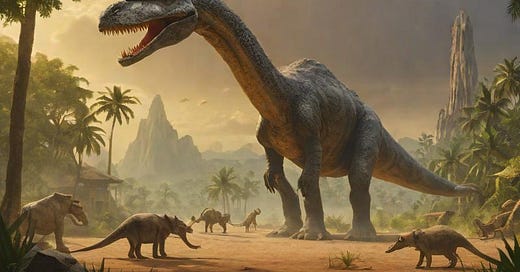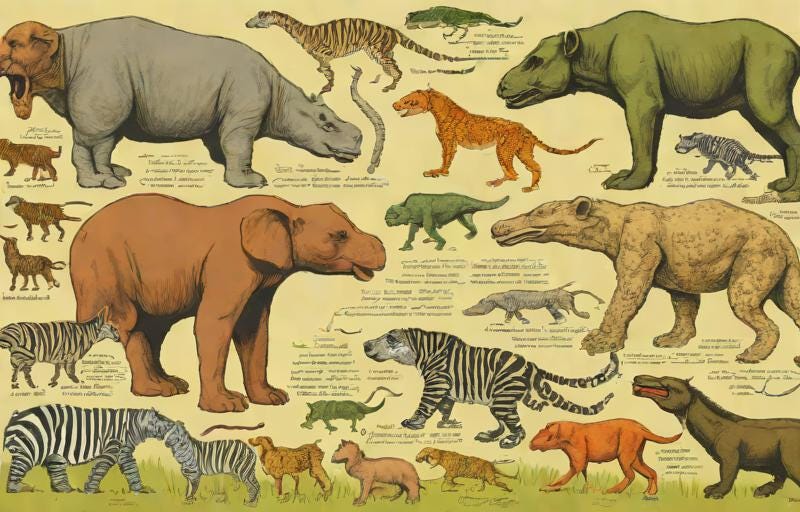Vu Le, author of the incisive and hilarious blog, NonprofitAF.com, is a 501c3 icon, a legend, and a self-styled philanthropy dominatrix. He’s also my friend and I had the chance to take a nice walk with him the other day to catch up on life and, of course, the sector we’ve both dedicated ourselves to for many years. I had just shared with him my wild and optimistic vision for a future world where most people work for nonprofit organizations to which Vu responded, “Interesting. I thought we were working toward a world that no longer needs nonprofits.”
Like the crack of a leather riding crop, Vu’s comment instantly brought my attention to the opportunity for us nonprofit folks to see our own sector with new eyes. Not only is there a need for private and public sector folks to rethink the role of nonprofits, but even those of us who have been in the work for a long time have grown accustomed to an identity that must evolve.
Seeing nonprofits with new eyes
When most people think of nonprofit organizations, we’re quick to associate them serious and somber causes. The world is full of suffering and many of the most visible nonprofits are dedicated to addressing some facet of human plight. These issues also tend to be the most vivid and compelling when it comes to fundraising, and so there may also be a kind of feedback effect where the most emotionally wrenching missions generate the most funding, which those organizations spend on further increasing the visibility of the issue.
It’s no wonder Vu may not have received my vision of a future where nonprofits dominate the landscape as an optimistic one, the way I intended it to be. In order to see a world in which the vast majority of people work in the nonprofit sector as positive vision for the future, we must first disentangle the anatomy of nonprofits from the work they are most well-known for doing.

Nonprofit anatomy 101
Beginning with the basics, nonprofits are simply organizations that must direct all of their revenue toward their stated charitable purpose, and they cannot distribute excess revenue as profit, hence the name. As I’ve written about in this earlier piece,
Why Are They Called 'Nonprofits' Anyway?
Welcome to this edition of The Process, a free weekly newsletter and companion podcast discussing the future of technology and philanthropic work. If you enjoy reading and listening, please consider subscribing and sharing with your community! Thank you!
interesting things happen when human beings construct organizations dedicated to purposes other than profit-making. The first thing that happens is a giant mess gets made. Without a profit-motive, something far less tangible, less precise rushes in to fill the vacuum — human values.
Absent the definitive mathematics of a P&L, people must coalesce, cooperate, and continually commit and recommit to the purpose of the work asking, how do we best serve our mission? Even the answer to that question evolves over time as people and world change.
Thus nonprofit work is often messier, it evolves in non-linear ways, and grows organically rather than exponentially, much like the human beings that comprise them. Given all this ambiguity, it’s no wonder nonprofits also have a reputation for inefficiency, as well as for trying to rid the world of suffering.
Reptiles vs. mammals
Now, let’s pull apart some concepts by first setting aside the stereotype of fecklessness nonprofits have been tagged with, and try to see them as the incredible socioeconomic innovation they really are. Let me underscore just how radically revolutionary I believe nonprofits are by using the following analogy: for-profits are to reptiles as nonprofits are to mammals.
To begin animating my analogy, please consider the comparative nervous system complexity of reptiles and mammals — the latter generally possesses more intricate circuitry that allows for higher cognitive function, more expansive learning, and elaborate social structures to form. Nervous systems allow organisms to perceive their environment, process information, and respond to changes both internally and externally.
In a sense, the ‘nervous system’ of a for-profit entity is like the more rudimentary reptilian nervous system because it is more or less solely focused on generating excess money. This kind of formatting is extremely effective and allows massive, powerful organisms and organizations to navigate the world in single-minded pursuit of what they need in order to survive and grow.
A nonprofit’s ‘nervous system’ is more like a mammal’s because it considers many more diverse types of information to be significant. Nonprofits can more easily make moves that are unprofitable because they are consistent with the mission, and it is often the case nonprofits make core strategic decisions based upon the importance of relationships with other organizations and community stakeholders. In these ways, I see a strong parallel with mammalian behavior.
Another angle of this analogy takes us back 205 million years ago to the time of morganucodon, our earliest known mammalian ancestor. This nocturnal shrew-like creature weighed between 1 to 3 ounces and must have darted between the earth-crushing feet of brachiosaurus, who weighed a staggering 99,000 pounds, the equivalent of 20 African elephants.
Today, we attribute great status to the world’s corporate titans for their size and economic strength, and struggle to envision a world without them. Yet I can’t help but wonder if, like the giant sauropod that was 800,000 times larger than the prehistoric rodent at its feet, might the likes of Microsoft and Walmart one day give way to a new dominant class of organization — the diminutive but dynamic nonprofit.
Dynamism is hypothesized to have enabled mammals to survive the mass extinction event that led to the demise of dinosaurs 66 million years ago. All kinds of factors like lower metabolic requirements, dietary flexibility, and warm-bloodedness may have allowed mammals to adapt to a sudden catastrophe by allowing them to survive with less food, scavenge for more diverse sustenance, and adapt to new colder climbs to persevere. But what is the analogous private sector mass extinction event, you say? A big ass economic meteor called, A.I., which I’ve also written about previously.
AI and the Future of Nonprofits
As the dust continues to settle in the wake of OpenAI CEO, Sam Altman’s firing and re-hiring, it seems like nonprofits took the biggest hit. It’s kind of like we caught an errant elbow to the eye in someone else’s fight. 501c3s were casually dissed by most of the tech and media world who pointed fingers of blame …
Today, Tesla may be a corporate T-rex, but that doesn’t mean things can’t change quickly. After all, OpenAI CEO, Sam Altman, is reportedly looking to raise $7 trillion with T dollars to build GPUs for the purpose of creating more powerful forms of AI, which people will, of course, immediately use to try to make more money.
AI is a private sector mass extinction event
I don’t think private sector leaders, Altman included, are visualizing the aftermath of their metaphorical meteor’s impact clearly enough. If they are successful, even to a fraction of their ambitions, I believe they will decimate the very ecosystem that has allowed for-profit companies to thrive, leaving behind a new landscape much more suited to organizations sustained and driven by things other than making a profit. The golden age of nonprofits is coming.
Next, let’s also peel away the notion that nonprofit work is inherently solemn in nature. My friend, Justin McCord, recently shared with me a marvelous description of the intricate supply chains operated by the largest New York City food banks. Justin rightly noted how the scale and complexity of their logistics is comparable to large grocery store chains. Both are sourcing and moving huge quantities of food, keeping it fresh, maintaining premises, and getting it into the hands of people.
The future is not-for-profit
What happens in a world in which, for example, AI and agricultural technology combine to make the cost of food trivial? As margins collapse, won’t the business model of grocery stores follow? Let’s say for the moment that there is no longer money to be made in distributing food to the public, I would argue the prudent move for society would be to begin replacing the grocery store model with the food bank model so that the roughly 3 million people employed in the sector now have a way to continue earning a livelihood.
What the nonprofit food bank model enables is both the logistical sophistication and efficacy of a major grocery chain, and room to replace profit with some other raison d'être, a reason for being. Today food banks primarily serve impoverished people who don’t have enough to eat, but there’s no reason they can’t also pursue other missions, such as to elevate and celebrate the art of food and eating.
Nonprofit food banks/stores of the future can be gorgeous, specialized marketplaces where workers are passionately engaged in providing people with an unimaginable range of artisanal culinary experiences. An example of a mission statement might be something like, to source, share, and delight in the most high-quality, healthful, and delicious food and recipes from the Mediterranean region. Can you imagine shopping at this place? My mouth is watering already.
Next time you’re out on the town, look at all the for-profit businesses and try to imagine them in a nonprofit form. What I hope you’ll see is the possibility of a radically different society in which the competition, differentiation, and innovation that are the very desirable qualities of capitalism, can exist and be humanized by organizing as nonprofit entities. If you’re still struggling to believe this is possible, consider that nonprofits are already responsible for 1 in 10 jobs in the U.S. and they operate all kinds of incredibly sophisticated enterprises including universities and even professional sports leagues like the NFL.
After the AI comet smacks into the economy we currently know, I think there will still be an important role for for-profit companies to play, just as there are still plenty of reptiles around. But the center of economic gravity will shift with the people, the majority of whom will move to the nonprofit sector where they will find more job security and dignity as they reinvent businesses to operate based on more complex, more humane values. The future, our future — is not-for-profit.
Thanks for reading this edition of The Process, a free weekly newsletter and companion podcast discussing the future of technology and philanthropic work. Please subscribe for free, share and comment.
Philip Deng is the CEO of Grantable, a company building AI-powered grant writing software to empower mission-driven organizations to access grant funding they deserve.










